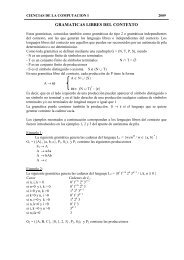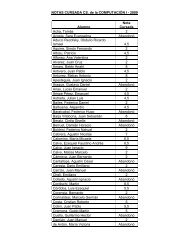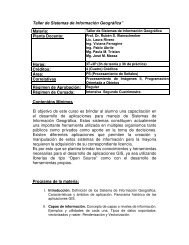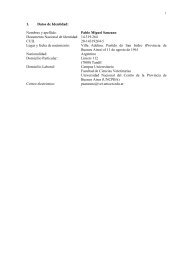Libro de Resúmenes / Book of Abstracts (Español/English)
Libro de Resúmenes / Book of Abstracts (Español/English)
Libro de Resúmenes / Book of Abstracts (Español/English)
Create successful ePaper yourself
Turn your PDF publications into a flip-book with our unique Google optimized e-Paper software.
Resumenes 98<br />
The dynamic <strong>of</strong> logistic stochastic system it is mo<strong>de</strong>led by mean <strong>of</strong> a<br />
<strong>de</strong>terministic differential equation that <strong>de</strong>scribes the probability distribution<br />
<strong>of</strong> the stochastic variable Nt (population size) for each t ≥ 0 .<br />
Let ( N t ) a stochastic process <strong>of</strong> births and <strong>de</strong>aths [1] with<br />
t≥0<br />
rates λn and β n respectively, the change <strong>of</strong> the probability distribution<br />
function (p.d.f) correspon<strong>de</strong>nt to population size n, when time t changes, it<br />
is mo<strong>de</strong>led by the followings differential equations:<br />
dP<br />
dt<br />
( n,<br />
t)<br />
( n − 1,<br />
t)<br />
λ + P(<br />
n + 1,<br />
t)<br />
β − P(<br />
n,<br />
t)(<br />
λ + β )<br />
= P<br />
n−1<br />
n+<br />
1<br />
dP<br />
dt<br />
( 1,<br />
t)<br />
dP<br />
dt<br />
= P<br />
( 0,<br />
t)<br />
= P<br />
( 1,<br />
t)<br />
β1<br />
( 2,<br />
t)<br />
β − P(<br />
1,<br />
t)(<br />
λ + β )<br />
2<br />
where P(n, t) is the probability that in the instant t ≥ 0 the population size<br />
let n.<br />
This p. d. f., it is studied when the population is in equilibrium state,<br />
that is, in the instant when the births and <strong>de</strong>aths rates are equal. Therefore,<br />
it has that:<br />
with<br />
dP<br />
dt<br />
( n,<br />
t)<br />
= 0<br />
( n 1,<br />
t)<br />
λ + P(<br />
n + 1,<br />
t)<br />
β = P(<br />
n,<br />
t)(<br />
λ + )<br />
P β<br />
− n−<br />
1<br />
n+<br />
1<br />
The method presented by Daniels [4] for the p.d.f., called<br />
Saddlepoint approximation is presented; after some transformations it is<br />
obtained the truncated saddlepoint approximation f m ( x)<br />
, [5. 6], resulting<br />
the normal distribution for m = 2 and the Saddlepoint approximation for<br />
<strong>de</strong>termine the population distribution with m = 3. In [5] it is recommend its<br />
use and they employ a approximation by truncation for the Saddlepoint<br />
approximation <strong>of</strong> p.d.f.<br />
Concretes examples applied for snail gar<strong>de</strong>ns, badgers and foxes<br />
populations are given, using the approximation by truncation p.d.f.,<br />
showing the goodness adjustment for different approximations effectuated<br />
according the parameter involves and using approximate and exact<br />
cumulants.<br />
Referencias<br />
[1] Bailey, N. T. 1964. “The Elements <strong>of</strong> Stochastic Processes”, Wiley, New York.<br />
[2] Daniels, H. E. 1954. Saddlepoint approximations in statistics, Ann. Math.<br />
Statist., 25: 631-650.<br />
1<br />
1<br />
n<br />
n<br />
n<br />
n



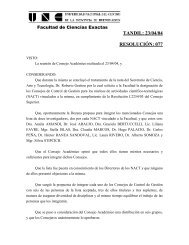
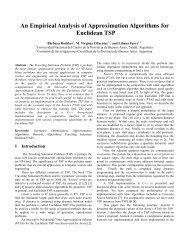




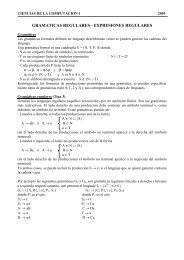

![Clase 13 [pdf]](https://img.yumpu.com/19616969/1/190x245/clase-13-pdf.jpg?quality=85)

